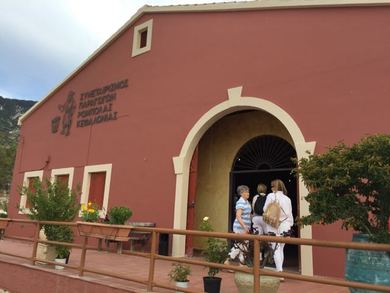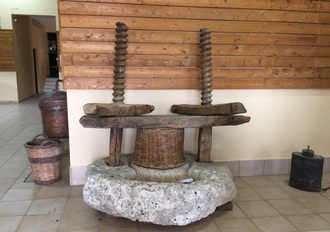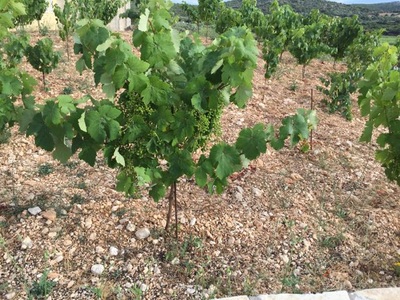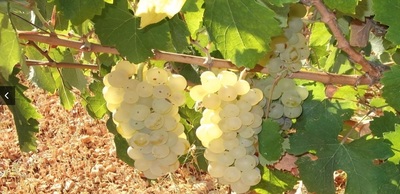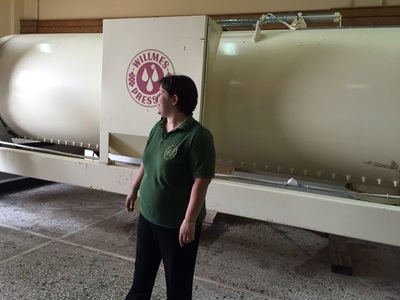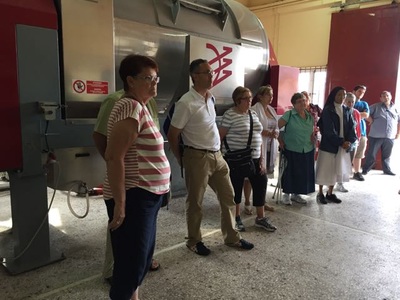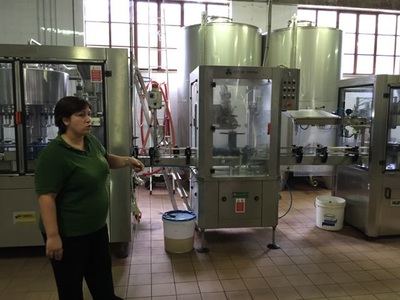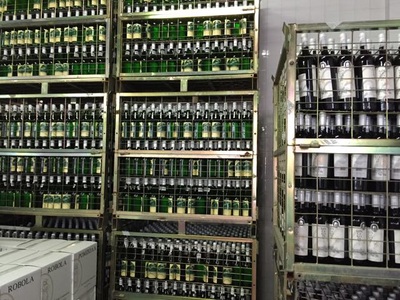The Robola Winery and Cooperative
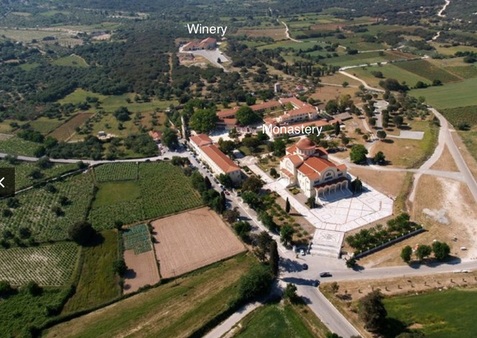 Winery and Monastery border each other but are separate entities.
Winery and Monastery border each other but are separate entities.
Greeks have been doing cooperative farming for centuries. It was a delight to stop for a tour of a winery very close to the Monastery of St. Gerasimos, and since wine making is often an economic output of monasteries it was fitting to find this one next door.
The Robola Wine Cooperative/Winery has 300 members and began gathering grapes from the Robola Zone (a special growing area specifically for these Kefalonian grapes) in 1983. Only this cooperative can export and sell the unique wines that are produced from the Robola grapes. The vineyards comprise over 250 acres and the special soil, temperature and location in the shadow of Mt. Enos in the Omala Valley contribute to the unique character of these wines. The vineyards produce both red and white classic wines and have added an organic variety. We were heartily welcomed and given samples of each wine, along with an informal talk about the methods that the grapes are grown, pressed, processed, bottled, and distributed.
There is one US importer of the Robola wines at Fantis Imports: www.fantisfoods.com in Carlstadt, NJ. The group purchased several bottles of wine and boarded our bus for the next stop south to the Monastery of St. Andrew and its spectacular Ecclesiastical Museum.
The Robola Wine Cooperative/Winery has 300 members and began gathering grapes from the Robola Zone (a special growing area specifically for these Kefalonian grapes) in 1983. Only this cooperative can export and sell the unique wines that are produced from the Robola grapes. The vineyards comprise over 250 acres and the special soil, temperature and location in the shadow of Mt. Enos in the Omala Valley contribute to the unique character of these wines. The vineyards produce both red and white classic wines and have added an organic variety. We were heartily welcomed and given samples of each wine, along with an informal talk about the methods that the grapes are grown, pressed, processed, bottled, and distributed.
There is one US importer of the Robola wines at Fantis Imports: www.fantisfoods.com in Carlstadt, NJ. The group purchased several bottles of wine and boarded our bus for the next stop south to the Monastery of St. Andrew and its spectacular Ecclesiastical Museum.
